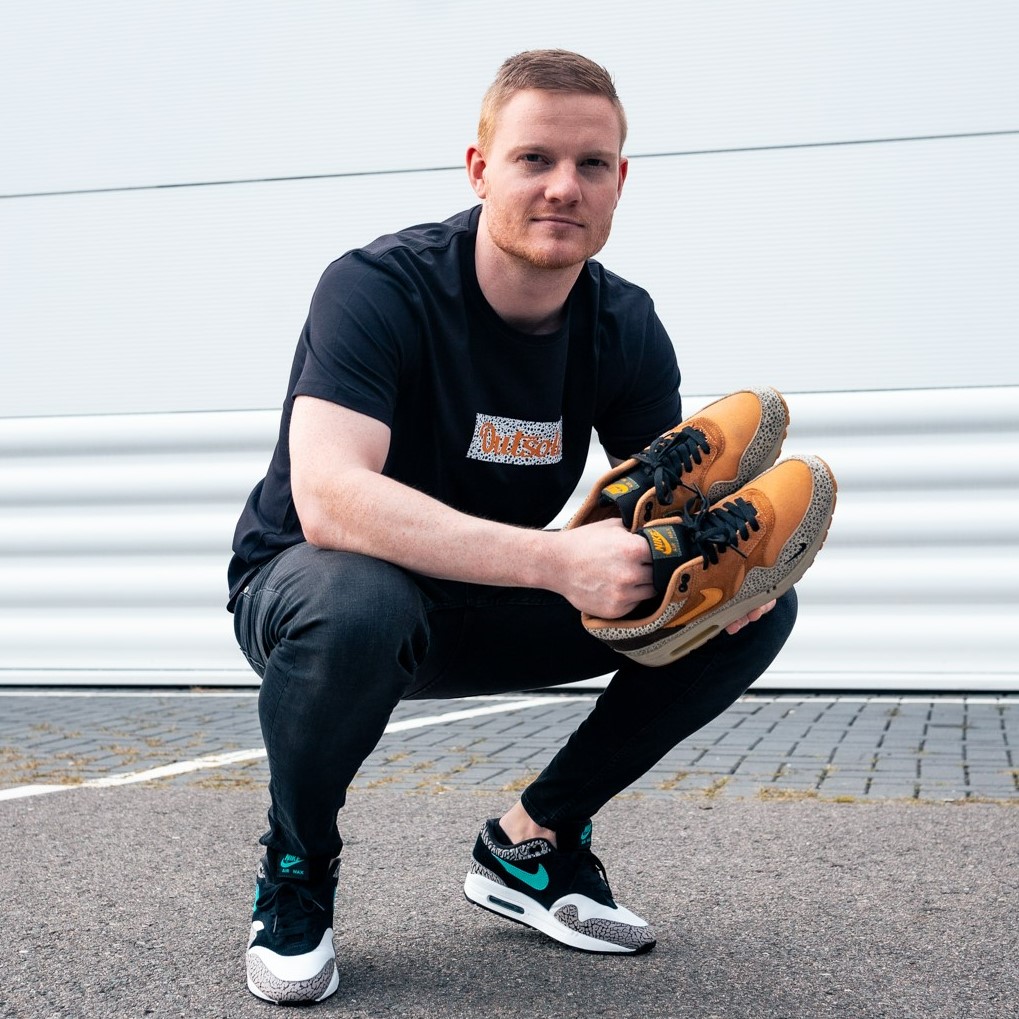Blogs
The history of the Nike Air Max 1
The history of the Air Max 1
3.26, the legendary ‘Air Max Day’. This day we celebrate the birthday of our greatest love. On March 26, 1987, the Nike Air Max 1 as we know it today was officially born. The most beautiful sneaker silhouette we know with the iconic air unit. And not just any air unit, but a visible unit. What makes the Nike Air Max 1 so special is that for the first time the air unit can be seen from the outside of the sneaker, instead of just feeling it under your feet.
NASA
NASA inventor and engineer Marion Frank Rudy invented this air unit. He found a way to pump gas into a bag, which could then be placed in the sole of a shoe. His idea was that you could give a sneaker extra cushioning in this way. He had no idea that this would ever become visible. It was purely a consideration for comfort. Marion Frank Rudy then visited many shoe brands to sell his idea. Nobody wanted to know about it until he came to Nike. Phil Knight, co-owner of Nike, saw the benefit of this ‘air’. One of the designers at Nike could probably do something with that. Tinker Hatfield had been with Nike for four years and had been promoted to the position of designer. He incorporated this air into the Air Jordan 1 in 1985. One year later the Air Max 1 would be invented.
The evolution of the visible air unit a.k.a. air bubble.
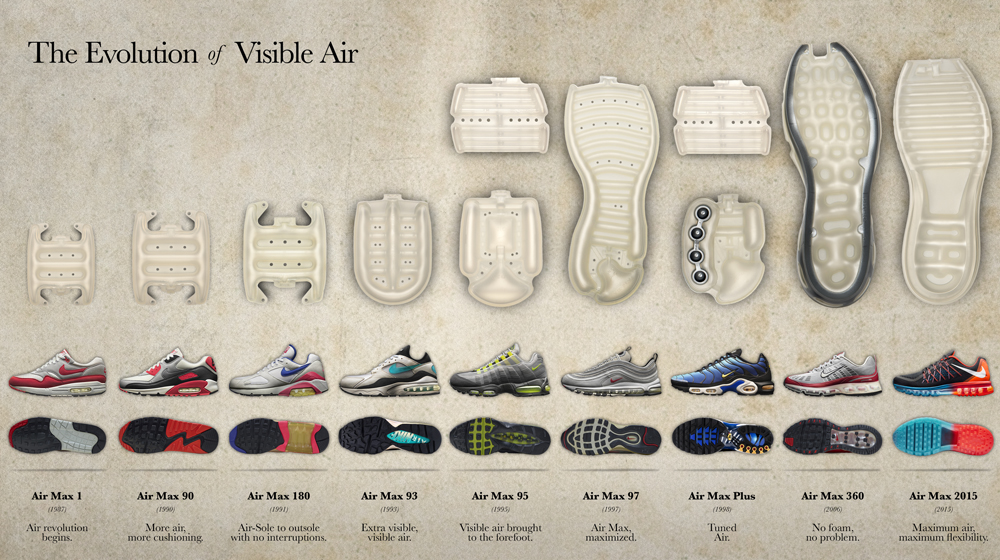
Tinker Hatfield
You can imagine that Tinker Hatfield is the greatest legend imaginable to us. Okay, we like the Jordan 1, but the Air Max 1 is not normal! A visible air unit, how do you think of it?! Of course, this idea did not just happen. A trip to France preceded this. He was inspired by the Paris Center George Pompidou. The architects of this building have thought of turning a building inside out. Tinker wanted to do the same with a Nike Sneaker. That resulted in the Nike Air Max 1 in 1986. Incidentally, this sneaker did not come alone. The AM1 would come as a pack with sneakers like the Air Trainer 1 and Air Safari. Certainly not a bad pair either!
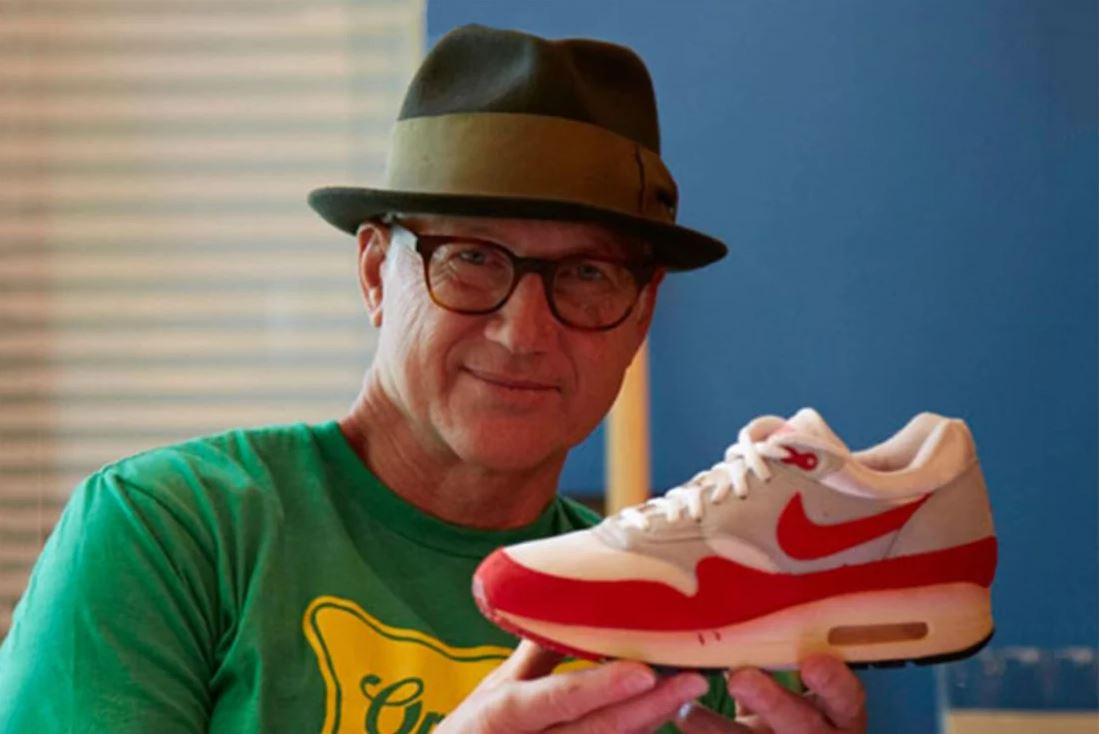
Little support
That was definitely not an immediate success. At first, Nike was certainly not charmed by the appearance of the Air Max 1. Nike was mainly concerned with seeing how they could reduce the size of the air unit. Most of the employees at Nike thought the design was ugly or went too far. Hatfield persisted, even though it nearly cost him his job. Luckily Tinker didn’t give up on Hatfield and the design came anyway! Otherwise we wouldn’t have a hobby 🙂
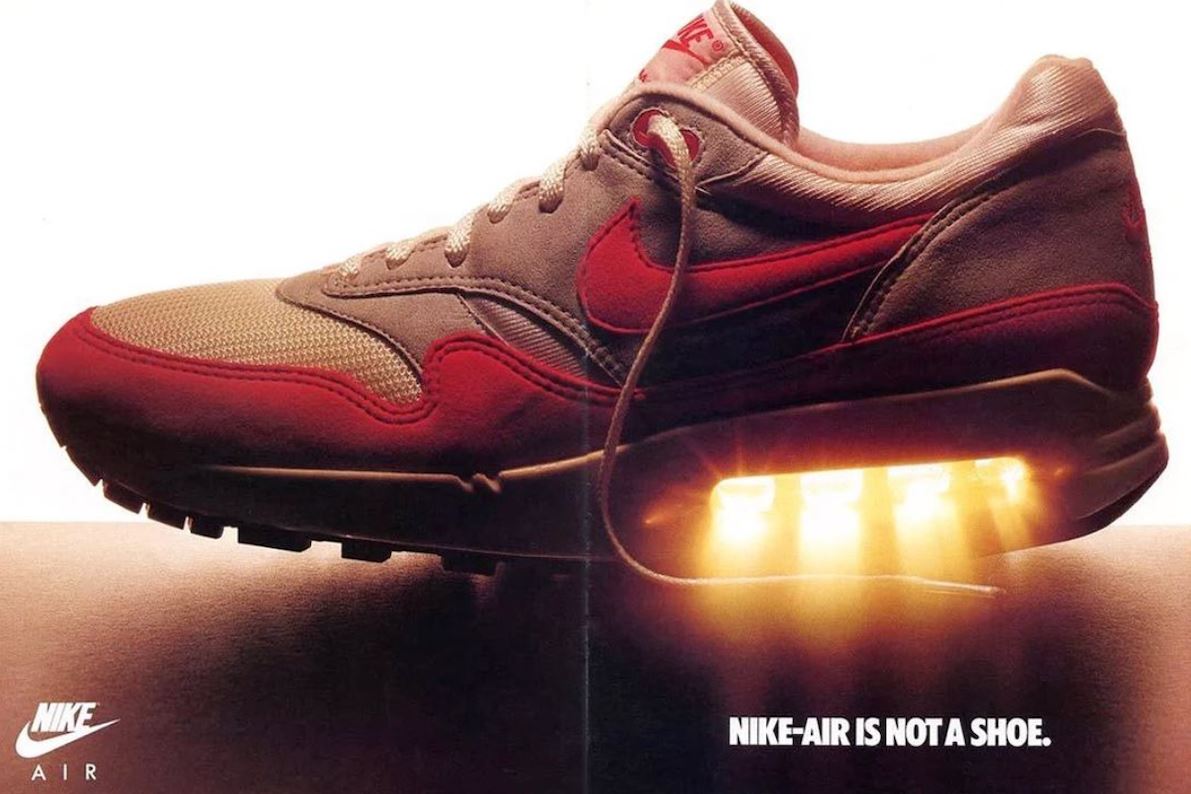
1986
The Nike Air Max 1 is a real runner. What’s in the name, this sneaker was released as a running shoe. You can no longer imagine that today, but that is the reason why this sneaker was released with ‘air’. What many people don’t know is that the first Nike Air Max 1 aka ’87 is not from 1987 at all. 1986 was the year that the very first Nike Air Max 1 came out. The differences are a larger air unit, with three dots visible above it. In addition, there were no grooves / stripes on the side of the midsole. These were only applied to the rear. The ‘Sketch to Shelf’ release is an ode to this ’86 couple.
These “Sketch To Shelf” 1s are directly inspired from Tinker’s first sketches of this revolutionary sneaker. The mudguards, Swoosh, and upper overlays are colored in a sketch-like format, exposing blank canvas and suede under brush strokes of color. His signature is spotted on the heels, with “Sketch, Property of Nike, Not For Resale” printed on the sockliner. Sketch lines printed on a translucent outsole complete the design. These sneakers released in July of 2019.
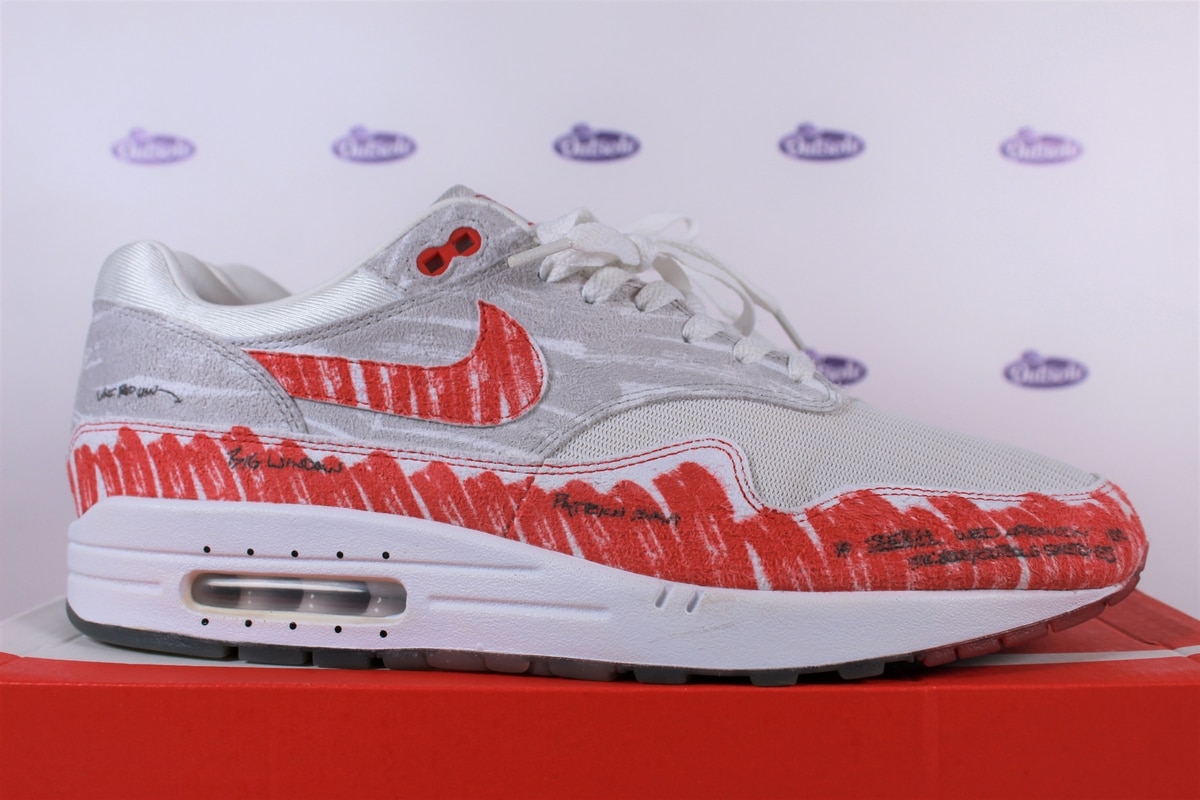
Sports marketing
After making a number of concessions on the appearance of the AM1, the 1987 variant came on the market. This is the couple as we know it today. Nike grew enormously as a brand and a lot of marketing money was also pumped into this sneaker. To put the Nike Air Max 1 on the map. Well-known athletes such as Michael Jordan and tennis player John McEnroe were used for this. A commercial followed with the Beatles’ controversial “Revolution.” The sneaker was really thrown into the world as a sports shoe. That would change in 1988, when the first leather AM1 was launched. The Nike Air Max 1 was never going to be a real sports shoe.
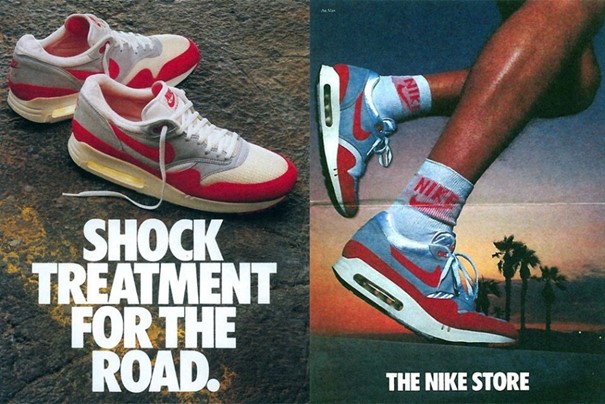
The Air Max 1
The basic properties of the Air Max 1 are flexibility, the good fit and the cushioning of the foam sole containing an air unit. The air unit is placed for the Air Max 1 at the heel of the sole to provide optimal support. The first Air Max 1 from 1987 has an upper of mesh and suede, in the colors red and blue: the Sport Red and Varity Blue. The shoe had to be striking from a distance, which is why these primary colors were chosen. Air Max 1 in these colors are the OGs to this day. After these originals, Air Max 1 in leather were released in 1988 and 1992. This would be more mundane.
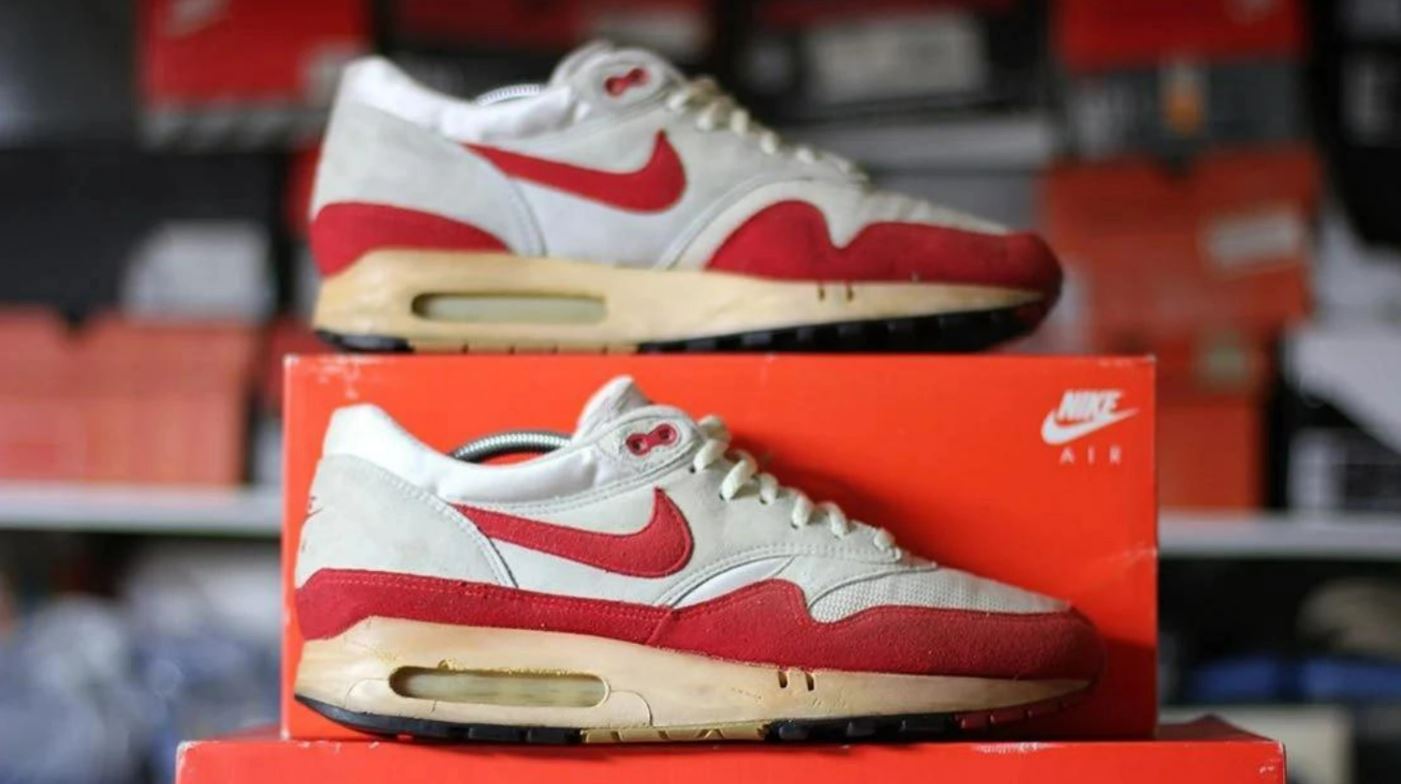
Searching
Nike was looking for what the Nike Air Max 1 should be like. You can see that in the years without releases with mesh and suede, the materials we prefer to see today. But there were also experiments with hybrid models. This resulted in 1992 with the first retro of the OG ’87 releases. In addition, the Nike Air Max 90 was launched in 1990. In 1993, Nike combined this ’90 sole with an AM1 upper. The Nike Air Max 90/1 Hybrid. A huge flop! Other variations followed. In 1996, the swoosh was slightly reduced to the size we know it today. That year there was even a release with a small shiny ‘jewel’ swoosh. Not a great success. A mini swoosh on the front of the sneaker then… Not a great success either. Ironically, these are now the sneakers that are going like hot cakes. From the late 90s, the Nike Air Max 1 stabilized. Leather as well as mesh and suede were used and countless colorways would follow. Obama, Kanye West, 50 Cent or our own Kraantje Pappie, the AM1 is also the ultimate killer pair among celebrities.
Funny thing is that Nike gave the Hybrid Air Max 90/1 a retro release. Again, no success.
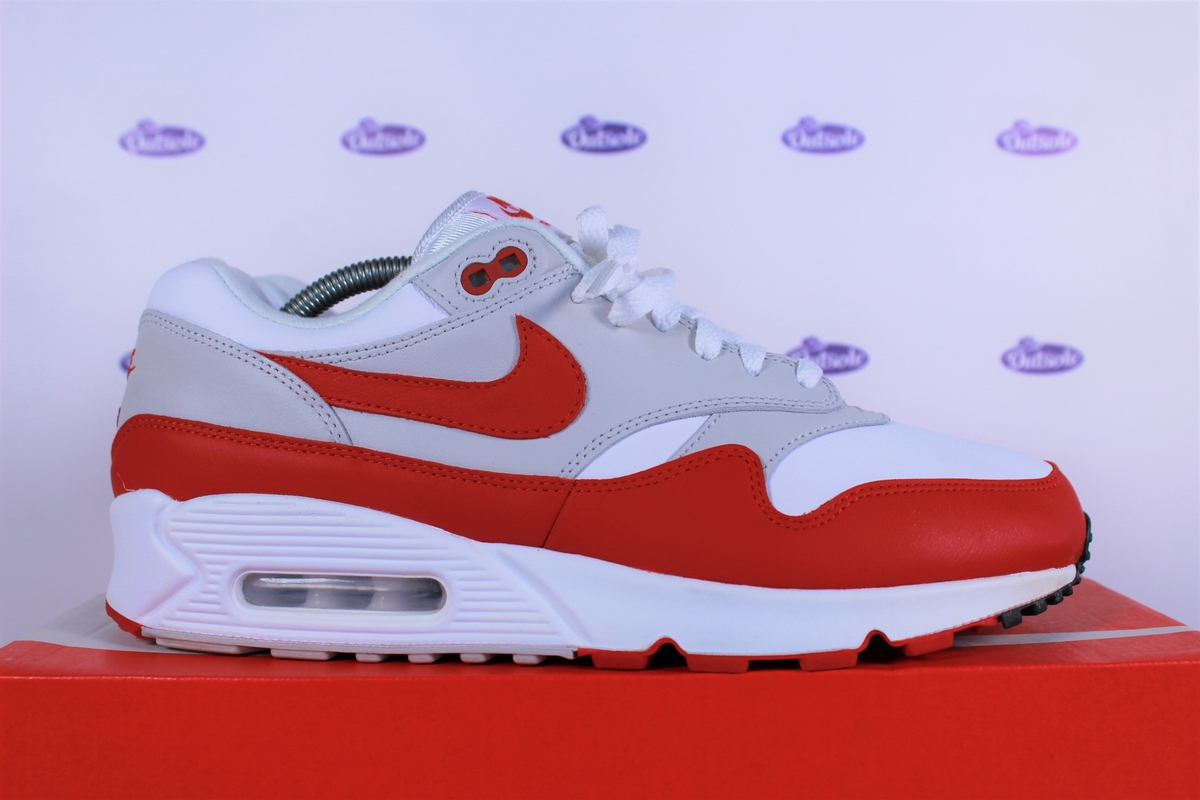
Air Max in the Netherlands
The Air Max is nowhere as popular as in the Netherlands. The gabber culture in the 1990s was essential in this regard. However, that also meant that the sneaker was seen as rebellious. Later in the 90s, other rebellious underground scenes also mainly wore Air Max. For example, we saw more and more hip-hoppers walking on Air Max. In addition to the AM1, the BW and ’90 were mainly wanted at that time. The gabber culture died out and the average Dutchman became somewhat freer of mind. This resulted in the Air Max becoming more accepted among mainstream fashion divas. The Nike Air Max 1 in particular gained popularity and has been dominating among sneaker enthusiasts for years now. Sneakers have now become so normal that you can also get away with a colorful pair under a suit. With an AM1 sneaker on your foot, you are always in the right place.
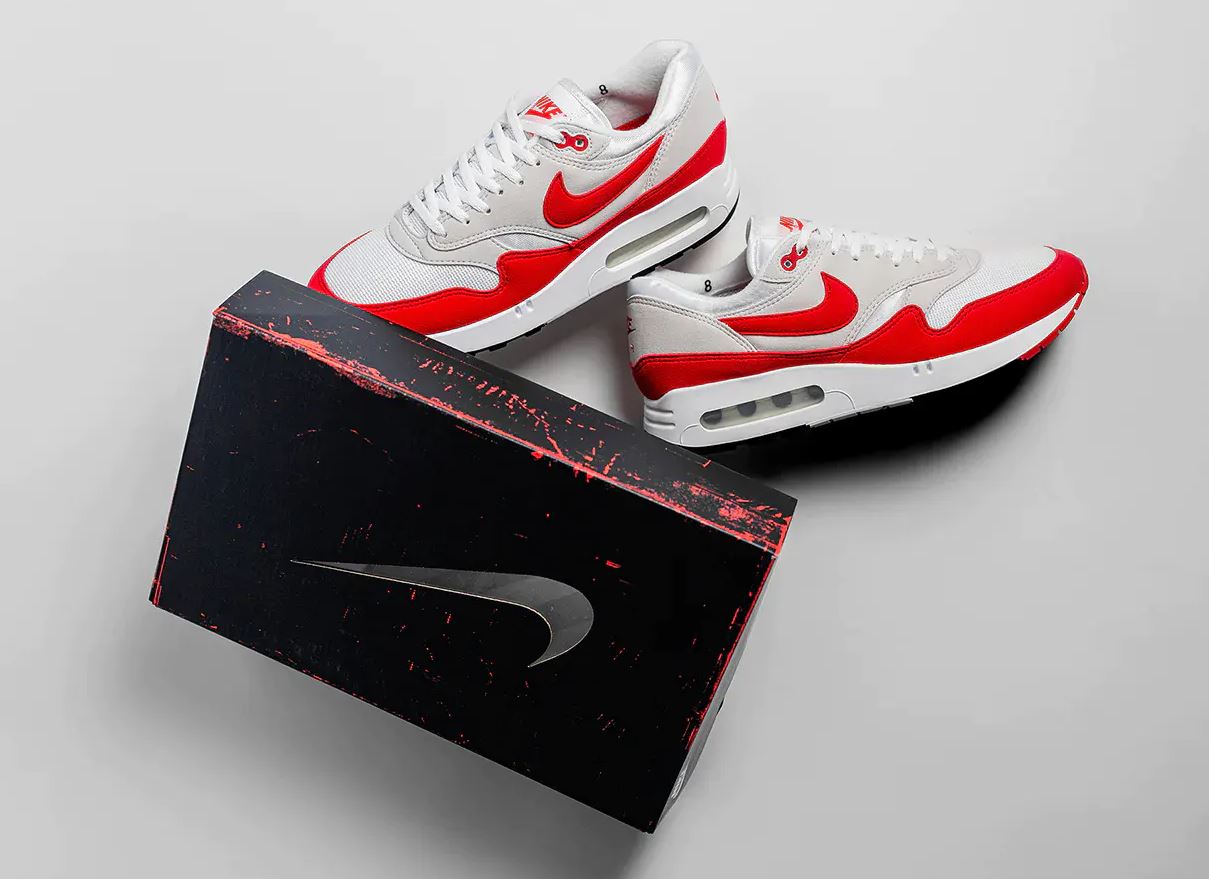
2023: The return of the Big Bubble
FINALLY! The return of the Nike Air Max 1 with the Big Bubble took place at Air Max Day 2023. The return of the legendary original pair that should have been released in 1986. The real OG Red. Besides this amazing tribute to the Nike Air Max 1, Nike will drop a few more colorways with the big bubble. We expect it to be a temporary shape.
Yes, we are sure about it. Air Max 1 = Fashion.
